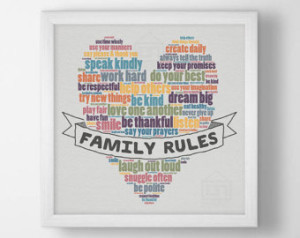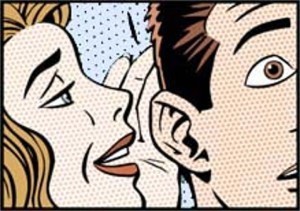Mary Gottschalk's Blog, page 8
December 7, 2013
Never Enough Time
 My guest this week is Sharon Lippincott, who defines herself as an evangelist for lifestory writing and memoir. As such, she is a keen observer of the way that family and friends deal with secrets.
My guest this week is Sharon Lippincott, who defines herself as an evangelist for lifestory writing and memoir. As such, she is a keen observer of the way that family and friends deal with secrets.
Herewith her contribution to my series on issues that play a role in my forthcoming novel, A Fitting Place.
It never came up …
“Mom, I need my birth certificate to apply for my passport. Do you know where it is?” Twenty-three-year-old Sally was preparing to move with her bridegroom to his new station in Europe.
“Look in the top file cabinet drawer. There’s a folder toward the back, labeled Family Documents.”
Sally had no trouble finding the folder, but as she flipped through the documents, one nearly stopped her heart. Gothic letters at the top identified it as divorce proceedings, and her father’s name and a woman she never heard of were listed. The date was several years before Sally was born and three years before her father and mother had married. She stood in a state of shock, reading and re-reading the document. Why hadn’t anyone ever told her?
She finally put the document back in the drawer. After bidding a hurried good-bye to her mother, she went home to consider what she’d seen. There must be a reason nobody had told her or her sister. What else did she not know? Did she have half siblings somewhere she knew nothing about? How could she blurt out the question, let her parents know that she knew? Finally she decided to do a little research before confronting them. Even though they’d always encouraged Sally and her sister to speak their minds about anything, it seemed the game had changed.
The evening she went by to see Uncle Jim. He was a straight shooter, and she knew he’d level with her. Sure enough, her father had been married before, as soon as he graduated from college, but it had only lasted three years. There had been no children. “I’m so sorry you had to learn about it this way, Punkin. You deserve better. I told your dad several years ago that he ought to come clean about this and he promised he would. But I guess it isn’t easy to figure out how. Don’t be too hard on either of them, okay? You know they love you and didn’t mean to hurt you.”
She nodded and thanked him and went home warmed by his big hug.
“Dad, there’s something I need to ask you,” she said when she found her father puttering around his garage workshop the next day.
“What’s on your mind?”
“Why didn’t you or Mom tell us kids that you’d been married before?”
His eyes formed huge circles before they fell to the floor. “You found the papers.” Sally nodded without replying.
It’s not that we meant to keep it from you,” he said slowly. “It wasn’t really a secret. It’s just that, well, it never came up. How do you work that into a conversation?”
“I don’t know Dad, but I wish you’d figured it out.
I never got around to it …
Sally’s true story is intense, but nearly everyone has lesser secrets that aren’t really secrets. Many are far simpler, about things that just never came up. For example, my friend Suzanne recently told me that she was stunned to learn, after forty some years of marriage that Sam hates beets.
“Why didn’t you ever tell me?”
“I guess I just never got around to it. You don’t fix them that often, and I thought you must like them,” Sam replied.
Sometimes, when something just doesn’t come up at first, it may later seem that if you bring it up now, you’ll raise a lot of questions about why you didn’t mention it sooner. Things can become complicated, though originally quite innocent and harmless.
We all have “secret” information that may or may not be intentionally withheld. Maybe you avoided a topic for fear of starting an argument or hurting someone’s feelings. Maybe you understood (or assumed) that if you mentioned “whatever” it is, the other person would never think of you the same way again, and that wasn’t a risk you wanted to take.
But mostly, well, there’s just never enough time to say everything on your mind. Choices have to be made. We do the best we can, and roll with the punches when things go astray like they did for Sally.
So don’t assume, if you learn that someone has been keeping a secret—even if it’s as big as Sally’s dad—that they intended to never tell you. Maybe it really was just hard to know how to bring it up. The moment was never right.
What do you wish you’d found the right moment to talk about?
This blog continues the discussion on themes in my novel. I welcome comments and guest blogs from my readers based on their own experiences. Let me know if you’d like to do a guest blog on one or more of the issues relevant to A Fitting Place.
 Sharon Lippincott is the author of five books and a contributor to several others. Her most recent, Adventures or a Chilehead: A Mini-Memoir with Recipes, entertains readers with her lifelong love affair with mouth-searingly hot chile. She teaches writing courses online, in Carnegie Mellon and University of Pittsburgh Osher programs, and co-hosts the Life Writers’ Forum YahooGroup. She is founder of the Pittsburgh area WE WRITE! Creative Writing University and serves on the NAMW advisory board. She has been blogging at The Heart and Craft of Life Writing and invites you to visit her new Adventures of a Chilehead blog where she shares reflections on places, pleasures and pains of hot peppers.
Sharon Lippincott is the author of five books and a contributor to several others. Her most recent, Adventures or a Chilehead: A Mini-Memoir with Recipes, entertains readers with her lifelong love affair with mouth-searingly hot chile. She teaches writing courses online, in Carnegie Mellon and University of Pittsburgh Osher programs, and co-hosts the Life Writers’ Forum YahooGroup. She is founder of the Pittsburgh area WE WRITE! Creative Writing University and serves on the NAMW advisory board. She has been blogging at The Heart and Craft of Life Writing and invites you to visit her new Adventures of a Chilehead blog where she shares reflections on places, pleasures and pains of hot peppers.
Sharon welcomes questions and comments by email at ritergal@gmail.com.
The post Never Enough Time appeared first on Mary Gottschalk - Author.
December 3, 2013
Inside the Writer’s Brain
 What happens inside the writer’s brain? Is there a direct link between what a writer feels and the words that spill out onto the page? Is there any correlation between what happens inside the writer’s brain and what the reader experiences based on the writer’s words?
What happens inside the writer’s brain? Is there a direct link between what a writer feels and the words that spill out onto the page? Is there any correlation between what happens inside the writer’s brain and what the reader experiences based on the writer’s words?
These questions are not new. As I noted in a recent blog, the expression theory of art argues that there must be some degree of resonance between the writer and the reader if the book is to be considered art. But much of the discussion over past century has been from a philosophical perspective, looking at what ought to be, rather than what is. Until recently, there has been no way to document what was inside the writer’s brain or the reader’s brain, let alone how similar they were.
In the last ten years, however, the expression theory has taken on an empirical dimension. With the emergence of the field of neuroesthetics, researchers can use an array of sensors and cameras to monitor the brain waves, heart rate, skin condition and facial expressions of both writers and readers.
Testing the Theory
One of the first guinea pigs for this new brain imaging technology is Dutch novelist Arnon Grunberg, who is completing a work of fiction. While he writes, Grunberg wears a plastic cap fitted out with electrodes. As part of the experiment, Grunberg tries to limit each section of his writing to one dominant emotion. The sensors and cameras, developed in the Netherlands, track his cursor and can match what he has written with his physiological and neurological data.
Gathering data on Grunberg’s process of writing is only the beginning. When his novella is published in 2014, fifty readers who agree to use an e-reader under laboratory conditions will face the same array of sensors and cameras.
According to a recent New York Times article, the Dutch researchers will then scour the data, looking for “patterns that may help illuminate links between the way art is created and enjoyed, and possibly the nature of creativity itself.”
“Will readers of Arnon’s text feel they understand or embody the same emotions he had while he was writing it, or is reading a completely different process?” said Ysbrand van der Werf, a researcher at the Netherlands Institute for Neuroscience and the VU University Medical Center in Amsterdam.
I, for one, can’t wait to see what the researchers learn from this study. As a writer of a soon-to-be-published novel, I definitely want my readers to resonate with the experiences and emotional responses of my characters. But many of my readers will come from a cultural, educational and/or economic background different from mine. Why would I expect them to feel exactly the same emotions I did while writing?
And does it even matter?
The post Inside the Writer’s Brain appeared first on Mary Gottschalk - Author.
November 25, 2013
Divorce and Teenagers
My guest today is Sherrey Meyer, a Portland-based writer and book reviewer, sometimes proofreader and beta reader. Her insightful essay addresses a key theme in A Fitting Place — the impact of divorce on teenagers, and the impact of the teenager on the family.
 Divorce and teenagers don’t mix well.
Divorce and teenagers don’t mix well.
Carl Pickhardt, Ph.D., a psychologist in Austin, TX, wrote in an article published in Psychology Today in 2009:
Because the adolescent is at a more disaffected and rebellious stage with parents, divorce can intensifies [sic] their grievances. Rather than cling, the adolescent tends to pull away. Adolescents often feel betrayed by the broken parental commitment to family and become angrier and less communicative. (Emphasis mine.)
I know from experience that something changes during adolescence, creating a resurgence of memories from childhood layered onto the present.
I saw this with my stepdaughter, who was almost six when her parents divorced. By the time Leah (not her real name) reached adolescence, her life experiences included (1) learning she was adopted, (2) seeing her adoptive parents divorce, and (3) watching daddy remarry.
In her memory bank, each of these events directly linked to a woman who had let her down – her birth mother, her adoptive mother, and me. Leah’s adolescent rage centered on a distrust of women.
Leah’s solution: Bring Mom and Dad back together again and all will be right with the world. How to make this happen? Destroy Dad’s new marriage.
Around 15, Leah convinced us her life at home with Mom and Mom’s boyfriends was miserable, and she needed stability. We believed her every word.
When Leah moved from Tennessee to Oregon to live with us, she brought her misery with her, upending our family life. Skipping school, not doing her share of chores, sleeping until noon because she didn’t go to sleep until the wee hours of the morning, poor eating habits, and what we called the “adolescent mouth.”
And while she was with us, Leah worked diligently to break down our marriage. At one point, I felt her success rating was ready to go through the roof.
We realized that we, the parents, needed to make a concerted effort to be in agreement when problems arose and needed to keep our guard up not to be pitted against each other. We needed to enforce the household rules that applied to our other children. Regular school attendance and a return home at the end of the day; if there was a change in the afternoon schedule, she had to call one of us. Don’t leave the house without letting us know where she was going and with whom. We liked to meet the friends our children were hanging out with, to know what they were like. Regular lights out, getting up on time, and eating meals together were also on the list.
It was only three weeks before Leah was on the phone begging Mom to take her back, professing her mom was the “glue that held her life together.” And back Leah went.
This was the worst of our experiences with the impact of divorce on a family with a teenager, but there are others. For children in this age group, the grieving process is much the same for your child as if the parent has died. After all, one parent is no longer in the home 24/7.
Other things you might expect to experience:
Wide-ranging emotions, including anger, fear, anxiety and sadness;
Breaking or challenging old rules just to gauge your reactions;
Judging self and others harshly;
While struggling with their own social or work interests, lashing out against the custodial parent’s search for new job or new friends:
Shocked and anxious reaction to parent dating,
Showing resentment toward new friends of parent,
Competition with parent’s new boyfriend/girlfriend, i.e., finding ways to make scheduling difficult, interfering with phone conversations, etc
Dealing with these multiple changes in your adolescent/teen depends on you. The custodial parent should make every effort not to speak out against the absent parent; and likewise, the absent parent should not speak against the other parent during visitation and outings. Additionally, “buying off” your children with extravagant gifts and trips will not serve either parent well. This is the equivalent of saying, “Your mom [or dad] can’t provide for you like I can.” Not fair! And it only increases already conflicted feelings in your child.
The changed family unit does not change your status as parents. You continue on as mother and father of your child(ren). Continuing to provide love, affection, give-and-take (yes, we do have to concede from time to time), and understanding of each other as well as your teenager will go a long way to easing the stresses and anxieties of being a child of divorce.
Remember, it really is simple. Your children come first.
 Sherrey, who spends much of her time as a wife, mother, grandma and great-grandma, is actively working on a memoir and several short essays.
Sherrey, who spends much of her time as a wife, mother, grandma and great-grandma, is actively working on a memoir and several short essays.
Sherrey is the author of “The Crumb Gatherer” (in Jonna Ivin’s anthology, “Loving for Crumbs”) and “The Unexpected” (in “Fall: Women’s Stories and Poems for the Season of Wisdom and Gratitude”), edited by Debra Landwehr Engle and Diane Glass). She maintains two blog sites:
Healing by Writing, devoted to memoir writing, and
Found Between the Covers, offering reviews of books that Sherry has read.
This blog continues the discussion on themes in my novel. I welcome comments and guest blogs from my readers based on their own experiences. Let me know if you’d like to do a guest blog on one or more of the issues relevant to A Fitting Place.
To see the full Pickhardt article, click here
The post Divorce and Teenagers appeared first on Mary Gottschalk - Author.
November 18, 2013
Writing for My Readers – Part II
 Early in this series on recurring themes in my novel A Fitting Place, I mused on the need to create characters that resonate with my readers … to make my readers shiver with recognition as they follow the hopes and fears, the defeats and triumphs of fictional individuals whose life situations may be very different from their own, but whose emotional responses they recognize instantly.
Early in this series on recurring themes in my novel A Fitting Place, I mused on the need to create characters that resonate with my readers … to make my readers shiver with recognition as they follow the hopes and fears, the defeats and triumphs of fictional individuals whose life situations may be very different from their own, but whose emotional responses they recognize instantly.
The need for resonance from my readers looms large in my mind as I complete the final draft and incorporate the insightful suggestions of my editor.
It is a bit of serendipity that this final phase of my writing coincides with a semester-long course in the Philosophy of Art where we have repeatedly asked how to determine if a created object rises to standard of art.
Herewith a few thoughts on how selected theories of art apply to getting resonance from my readers:
An early approach, going back to Plato and Aristotle, was the theory of representation, which required that art imitate life. While the focus of the theory was on the intentionality and skill of the artist, it implicitly required that the viewer—or the reader—recognize and appreciate the aspect of life being portrayed.
This theory went by the boards with the arrival of modern (e.g., abstract) art, to be replaced by the theory of expression. Here, the artist/author had to be motivated by an emotionally significant experience and transmit the emotion to the viewer. There has been ongoing debate about the need for the viewer/reader to experience exactly the same emotion as the artist/author, but without some degree of emotional resonance, it cannot be considered art.
A third approach is the theory of aesthetic emotion, for which the 18th century philosopher Immanuel Kant was a key proponent. In Kant’s view, appreciation of art is a wholly subjective experience that we assume others will share, but which cannot be defined or explained in conceptual terms. In other words, adhering to the rules of the writer’s craft matters not if my readers don’t respond with a sensory feeling connected in some mysterious way to the meaningfulness of life.
My personal favorite is the theory of the text, proposed by Roland Barthes, a 20th century French literary theorist and critic. Barthes makes the case that meaning is not created by the artist, but by the reader. In other words, it doesn’t matter what story I intended to tell, or what emotions I intended to convey. What matters is whether my readers, as they engage with the words on the page, experience that shiver of recognition, that moment of aliveness that comes from being in touch with the universal human condition.
As I worked on A Fitting Place, I have pored over dozens if not hundred of articles about the craft of writing … things to do and things not to do. The serendipity of the philosophy course, coming at this particular moment in time, lies in its timely and frequent reminder that, however skilled the craftsman, it is not good writing unless it touches the reader’s soul.
What do you think is required for writing to rise to level of art?
This blog continues the discussion on themes related to my novel. I welcome comments and guest blogs from my readers based on their own experiences. Let me know if you’d like join the discussion by doing a guest blog.
The post Writing for My Readers – Part II appeared first on Mary Gottschalk - Author.
November 11, 2013
A Meaningful Life
I am traveling in California, a leisurely break from my pursuit of a meaningful life as a writer. My travels make getting a weekly blog written out of the question. Instead, I offer a lovely piece from Sunday’s Brain Pickings Weekly … excerpts of advice that Hunter S. Thompson, the renowned journalist and philosopher, offered to a friend when Thompson was a mere 20 years old.
 How to Find Your Purpose and Live a Meaningful Life
How to Find Your Purpose and Live a Meaningful Life
“To be, or not to be: that is the question: Whether ’tis nobler in the mind to suffer the slings and arrows of outrageous fortune, or to take arms against a sea of troubles…
“And indeed, that IS the question: whether to float with the tide, or to swim for a goal. It is a choice we must all make consciously or unconsciously at one time in our lives. So few people understand this! Think of any decision you’ve ever made which had a bearing on your future: I may be wrong, but I don’t see how it could have been anything but a choice however indirect – between the two things I’ve mentioned: the floating or the swimming…
The answer – and, in a sense, the tragedy of life – is that we seek to understand the goal and not the man. We set up a goal which demands of us certain things: and we do these things. We adjust to the demands of a concept which CANNOT be valid. When you were young, let us say that you wanted to be a fireman. I feel reasonably safe in saying that you no longer want to be a fireman. Why? Because your perspective has changed. It’s not the fireman who has changed, but you.
[…] “As your experiences differ and multiply, you become a different man, and hence your perspective changes. This goes on and on. Every reaction is a learning process; every significant experience alters your perspective. So it would seem foolish, would it not, to adjust our lives to the demands of a goal we see from a different angle every day?
[…] “To put our faith in tangible goals would seem to be, at best, unwise. So we do not strive to be firemen, we do not strive to be bankers, nor policemen, nor doctors. WE STRIVE TO BE OURSELVES.
But don’t misunderstand me. I don’t mean that we can’t BE firemen, bankers, or doctors—but that we must make the goal conform to the individual, rather than make the individual conform to the goal. In every man, heredity and environment have combined to produce a creature of certain abilities and desires—including a deeply ingrained need to function in such a way that his life will be MEANINGFUL. A man has to BE something; he has to matter.
As I see it then, the formula runs something like this: a man must choose a path which will let his ABILITIES function at maximum efficiency toward the gratification of his DESIRES. In doing this, he is fulfilling a need (giving himself identity by functioning in a set pattern toward a set goal) he avoids frustrating his potential (choosing a path which puts no limit on his self-development), and he avoids the terror of seeing his goal wilt or lose its charm as he draws closer to it (rather than bending himself to meet the demands of that which he seeks, he has bent his goal to conform to his own abilities and desires).
In short, he has not dedicated his life to reaching a pre-defined goal, but he has rather chosen a way of life he KNOWS he will enjoy. The goal is absolutely secondary: it is the functioning toward the goal which is important.
[…] So if you now number yourself among the disenchanted, then you have no choice but to accept things as they are, or to seriously seek something else. But beware of looking for goals: look for a way of life. Decide how you want to live and then see what you can do to make a living WITHIN that way of life. But you say, “I don’t know where to look; I don’t know what to look for.”
And there’s the crux. Is it worth giving up what I have to look for something better? I don’t know—is it? Who can make that decision but you? But even by DECIDING TO LOOK, you go a long way toward making the choice.
To see the article in full, see Brain Pickings Weekly.
The post A Meaningful Life appeared first on Mary Gottschalk - Author.
November 4, 2013
Being Your Own Worst Enemy
 There are several times, in my novel, A Fitting Place, when both of my major characters are their own worst enemy.
There are several times, in my novel, A Fitting Place, when both of my major characters are their own worst enemy.
A typical definition of being your own worst enemy is acting in ways that are self-defeating, that prevent you from getting what you want or meeting your goals. But the definition that drives my characters has a slightly different focus: you are your own worst enemy when you are driven to action by two or more incompatible objectives.
For example, you can’t insist on being independent and self-sufficient, and still criticize people for not volunteering to give you assistance and/or support. You can’t complain that others take advantage of you if you’re unwilling to say “no.” You can’t take pride in being eccentric and then be offended when strangers are uncomfortable around you or question your decisions.
This last one I know from painful experience.
For many years, I was told that I was my own worst enemy but nobody seemed able to explain it to me in a way that told me what to do differently.
And then one afternoon, when I was in my late 20s and thinking I was well on the road to a successful career as an economist, my boss walked into my office and settled, unsmiling, into the chair across from me.
Only moments before, we’d left a meeting in which senior staff had grilled me on a paper I’d recently written. For nearly two hours, I’d had to explain and defend it, almost line by line. Apparently, my defense was sufficient, as they’d accepted my paper for publication.
What had I done wrong?
“Mary, do you realize that you’re your own worst enemy?” Peter said. “For a moment, I thought you were going to cry.”
“Why did they have to be so hard on me?”
“Your paper challenges some long standing views held by respected PhD economists who’ve been in this field for years. Your idea was new, and its significance wasn’t as obvious to everyone as it was to you.”
“But their questions were brutal—”
Peter interrupted me. “You should be flattered they took two hours out of their day to discuss a paper by someone barely two years out of an MBA. If you want to poke a stick in their eye, it’s your choice. But you can’t expect them to like it.
Well, of course you can, but as strategy, it’s pretty much guaranteed to make your own worst enemy.
The painful truth is that, thirty years later, I still have to temper my reaction when people don’t understand a point I’m trying to make. But at least now, I no longer take it personally.
Have you ever been your own worst enemy? How did you get over it?
This blog continues the discussion on themes in my novel. I welcome comments and guest blogs from my readers based on their own experiences. Let me know if you’d like to do a guest blog on one or more of the issues relevant to A Fitting Place.
The post Being Your Own Worst Enemy appeared first on Mary Gottschalk - Author.
October 28, 2013
Secrets & Lies – The Tangled Web of Human Nature
 My guest this week, Carol Bodensteiner, offers another thought-provoking perspective on the cost of keeping secrets.
My guest this week, Carol Bodensteiner, offers another thought-provoking perspective on the cost of keeping secrets.
The Lies of a Child
When I was ten years old, I made a bet with a classmate. The payoff was $1,000,000. I lost. At ten, I could no more grasp the concept of a million dollars than I could space travel, but I knew two things: 1) I was honor bound by my word to pay the debt, and 2) No one could know I had been so stupid.
I was about $3.00 into stealing nickels and dimes from my dad’s pants pocket before my horror at being a thief trumped my need to keep my word. It was more than 50 years before I told another living soul about that million-dollar bet.
This was my indoctrination into the dark underworld of secrets.
Keeping secrets – and telling lies to protect those secrets – is part of human nature. We’ve all felt the thrill of having and keeping a secret. We’ve all seen the devastation that results when a secret is revealed. We may even have felt the pain of having a secret of our own leaked. Secrets make wonderful fodder for novels.
The Lies of an Adult
As I grew up, so did my secrets. When I learned in the 1970s that my husband was gay, I embarked on a long and elaborate path of keeping that – and my own life – secret.
The impact of these secrets on me as the secret keeper lingers to this day.
Initially, I didn’t tell anyone about my gay husband because I feared how others would react, what they would think of me. In the 1970s, it was not unrealistic for my gay husband to fear for his job and possibly his life. It was not unrealistic to believe that people would blame me for his being gay. We had a child. We had jobs. We genuinely loved each other. We agreed not to say anything to anyone.
Keeping the secret became everything. In the isolation of my own thinking, the secret grew more powerful. My imagination created bigger, more damaging results should anyone find out. Even after my husband and I divorced, I did not tell anyone. After all, it was the past. Why dredge that up again?
What I didn’t realize was that by not saying anything, I was letting the secret define how I thought about myself. No matter the reality, the secret told me I was not a good wife, a good daughter, or a good mother. The conflicts between how I needed to see myself and the other reality of my secret world were huge.
I resolved the conflicts with strict compartmentalization. I was a good wife and mother. I was a good daughter. I was an excellent public relations practitioner (who could be counted on to keep secrets!). I was married to a gay man, but we never talked about that. I coped with my conflicted sense of self as woman and wife in some unhealthy ways, and I most certainly didn’t talk about THAT. As long as I operated within the rules of each compartment, as long as no one ever found out, life was fine.
Keeping secrets requires a tremendous amount of energy. Neuroscientists have found that secrets cause the brain to fight within itself as part of us wants to tell and another part wants to keep it hidden. The result? Huge stress.
James Pennebraker, a University of Texas psychologist, found that “people hiding traumatic secrets showed more incidents of hypertension, influenza, even cancer.” Pennebraker says, “Keeping a secret often becomes less about protecting people and more about becoming overly preoccupied with the “thing” or maintaining the double, secret life.”
Hiding my double life was exhausting. But, letting go of the secrets was terrifying. What would everyone really think of me when they knew the truth of who I’d been all those years?
Fifty years after the fact, I wrote about my schoolyard bet in my memoir. I told my mother the story before writing it. She didn’t stop loving me as I’d convinced myself she would. Amazing!
When I finally wrote about the secrets of my first marriage, told trusted friends, and unloaded with a counselor, I received positive, supportive responses. I found others who had experienced some of the same things. I was not rejected. In fact, I found community.
Confession has been good for my soul. Each time I tell the stories, the secrets own a little less of me. Telling makes the events a part of my life, not all of my life.
 Carol Bodensteiner is the author of Growing Up Country: Memories of an Iowa Farm Girl. She finds inspiration in the places, people, culture and history of the Midwest. She blogs about writing, her prairie, gardening, and whatever in life interests her at the moment.
Carol Bodensteiner is the author of Growing Up Country: Memories of an Iowa Farm Girl. She finds inspiration in the places, people, culture and history of the Midwest. She blogs about writing, her prairie, gardening, and whatever in life interests her at the moment.
Her essays have been published in several anthologies. Her debut novel, historical fiction set during World War I, will be published in 2014.
Carol’s website/blog: http://www.carolbodensteiner.com
Tweet @CABodensteiner; LinkedIn
Facebook: https://www.facebook.com/CarolBodensteinerAuthor
Quote from James Pennebaker comes from “How can a secret hurt me?” on the website for Discovery Fit & Health
This blog continues the discussion on themes in my novel. I welcome comments and guest blogs from my readers based on their own experiences. Let me know if you’d like to do a guest blog on one or more of the issues relevant to A Fitting Place.
The post Secrets & Lies – The Tangled Web of Human Nature appeared first on Mary Gottschalk - Author.
October 21, 2013
Keeping Secrets
 Keeping secrets can do enormous damage in a marriage or, for that matter, any personal relationship. The cost of keeping secrets is one of the key themes I explore in my novel, A Fitting Place.
Keeping secrets can do enormous damage in a marriage or, for that matter, any personal relationship. The cost of keeping secrets is one of the key themes I explore in my novel, A Fitting Place.
It is a subject I know well.
Over the years of my marriage, there were a thousand times I chose not to share my ideas with my husband. Sometimes it was as trivial as my desire to stop for lunch when I thought he wanted to keep driving. Sometimes it was more substantive … the kind of house I wanted to live in, or the kinds of food I preferred to eat. Sometimes it was an awkward subject … what I wanted from him by way of emotional support or sexual gratification.
As with more conventional secrets (e.g., an adulterous affair, an addiction), my unwillingness to reveal myself was driven by a fear of what he would think. Beneath that fear was a belief, instilled by a hypercritical mother, that how I felt and what I wanted was silly or childish or immature.
As too often happens, I carried this relationship with my mother into my marriage, projecting her scornful attitude onto my husband. It was not long before I started to read every difference of opinion as criticism, to live in fear that he “wouldn’t love me” if he knew that … [you can fill in the blanks].
To avoid the criticism and scorn I imagined he felt, I let him make most of “our” decisions and articulate most of “our” opinions. Day by day, I drifted farther away from the thoughtful, interesting and often opinionated woman he’d once wanted to marry. By the time we left for the journey recounted in Sailing Down the Moonbeam, I had become a cipher, an empty shell in the role of a wife.
And, of course, I blamed him for being controlling.
Our divorce, when it came, was all the more painful because I was in a foreign country where I knew no one and I had no support systems. But it also meant that, for the first time in my life, I had no one to tell me what I should think or what I should want or what I should do … no one to tell me that I was silly or stupid or childish.
At age 45, I finally stopped keeping secrets. I finally took control of and responsibility for my own life. The world has been a much better place ever since.
Are you a keeper of secrets? Have you been a keeper of secrets in the past? How did affect your relationships?
This blog continues the discussion on themes in my novel. I welcome comments and guest blogs from my readers based on their own experiences. Let me know if you’d like to do a guest blog on one or more of the issues relevant to A Fitting Place.
The post Keeping Secrets appeared first on Mary Gottschalk - Author.
October 14, 2013
Sexual Fluidity and Bisexuality–Are They the Same?
 My guest this week is Penelope James, who has co-authored Marina Peralta’s recently released memoir that “celebrates affection in any form regardless of sexual orientation or gender expression.” A key issue in this memoir, as in my novel A Fitting Place, is the concept of sexual fluidity. In the interview below, Penelope shares some of the insights she gained from working on this memoir.
My guest this week is Penelope James, who has co-authored Marina Peralta’s recently released memoir that “celebrates affection in any form regardless of sexual orientation or gender expression.” A key issue in this memoir, as in my novel A Fitting Place, is the concept of sexual fluidity. In the interview below, Penelope shares some of the insights she gained from working on this memoir.
Sexually Fluid vs. Bisexual
MG: Lisa Diamond, Professor of Developmental Psychology at the University of Utah has theorized that sexual attraction, particularly for women, is influenced as much—or more—by personal characteristics than by gender. Do you agree with her theory?
PJ: Yes. I do believe women are mainly attracted by personal characteristics. It can be a sexual, intellectual or emotional attraction that has nothing to do with gender. I can see myself being drawn to someone because of his/her mind regardless of gender even though physically I’m attracted to the opposite sex.
If the attraction to someone of the same sex is physical, it can be considered bisexual. Maybe it’s a genetic predisposition, or a result of early experiences, or even background influences. I have a friend who was heterosexual until her late sixties when she had a 5-year relationship with a woman. When I last saw my friend, she was very upset about what “people are saying.” It seems she’d been tagged as a lesbian due to that one relationship. She didn’t consider herself a lesbian but rather a heterosexual woman who had loved another woman for a brief period.
MG: Did your own view of bisexuality change while you were working on Peralta’s memoir?
PJ: I didn’t know much about bisexuality before I started working with Marina on what was intended to be a memoir about her life. The subject of bisexuality kept coming up and it became the focus of the book. There are only a few memoirs on this subject and none that I know of about sexual fluidity.
My understanding of bisexuality used to be “having the best of both worlds,” more in the sense of swingers than serious relationships. It changed when I met Marina, through her former partner who was a friend of mine. My friend told me they were bisexuals, as they both had been with men in the past. For them, it was the person who mattered and not the gender. After their relationship ended, my friend married a man.
I learned from Marina that the emotional aspects of a bisexual’s same-sex relationship may outweigh or even eclipse the physical attraction. In her memoir, Marina points out that her relationships with women were always more emotional and hence more painful throughout than her more physical relationships with men.
MG: Based on Diamond’s work, it strikes me that all bisexuals are sexually fluid, but that being sexually fluid does not require the label of bisexual? Any thoughts?
PJ: Marina says being bisexual means you have the potential for involvement with either gender … whether it be sexually, emotionally, in reality or in fantasy. But she also believes that sexuality runs along a continuum. It is not a static “thing” but rather a process that can flow, changing throughout our lifetime. For instance, women who have late-life switches to same sex relationships should not be categorized as lesbians but rather as bisexuals. Most of them had only opposite sex relationships before they discovered they could love a person exclusive of his/her gender.
Homosexual vs. Bisexual
MG: There is considerable overlap between the terms lesbian and bi-sexual, but they are not the same. Can you comment on that?
PJ: They’re definitely not the same. A lesbian loves/prefers only members of the same sex. Bisexuals choose the person regardless of their gender.
The public in general defines people in same-sex relationships as gay or lesbian. For most, there is no in-between … even though married women and men may have same-sex extra-marital sex. The word “bisexual” is often brushed off, or considered an excuse, or even offensive by heterosexuals and gays/lesbians alike. “Bisexuality” may be today’s version of yesterday’s homosexuality – to be kept in the closet or under wraps for fear of derision, ignorance, intolerance. While homosexuality is accepted or tolerated in most places nowadays, bisexuality is still an enigma, a term that suggests loose morals or sex addiction.
Marina’s book attempts to dispel many of the myths associated with the term bisexual, and instead focus on the bisexual identity. What Marina is doing, coming out openly as a bisexual, can be considered groundbreaking. Her aim is to use her life story to illustrate the bisexual identity and bisexual fluidity – something few people know of, understand or accept.
Penelope collaborated on Marina Peralta’s memoir Barriers to Love: Embracing A Bisexual Identity.
Penelope is also the author of Don’t Hang Up! Dialing My Way to a New Start to be published in 2014.
Find more information at: PenelopePennieJames@facebook.com and donthangupbook@facebook.comfacebook.com
This blog continues the discussion on themes in my novel. I welcome comments and guest blogs from my readers based on their own experiences. Let me know if you’d like to do a guest blog on one or more of the issues relevant to A Fitting Place.
The post Sexual Fluidity and Bisexuality–Are They the Same? appeared first on Mary Gottschalk - Author.
September 30, 2013
Parenting During Divorce
My guest today is Sherrey Meyer, a Portland-based writer and book reviewer, sometimes proofreader and beta reader. Her insightful essay addresses a key theme in A Fitting Place — how to manage the expectations of children during a divorce.
Parenting During Divorce
 Parenting sounds simple when reading the dictionary definition. Most sources define parenting as the “rearing of children” or as simple as “ the act or process of becoming a parent.” In most instances, it is not as easy as these definitions imply.
Parenting sounds simple when reading the dictionary definition. Most sources define parenting as the “rearing of children” or as simple as “ the act or process of becoming a parent.” In most instances, it is not as easy as these definitions imply.
Specifically, let’s think about the parent faced with divorce and the impact on children involved. During divorce, emotions rise and conversations become heated. Children are innocent bystanders witnessing these emotional changes and exchanges unless the parent or parents make every effort to control them.
Depending on the age of children, parents are encouraged to keep communications open. Honest responses to questions will help keep them and you healthy during this time of change.
A personal note here may be helpful. My divorce occurred when my son was a little past his first birthday, too young to pick up much from conversations or emotions. However, when my husband and his first wife began the process of separation and divorce, their children were six and five, a daughter and son, respectively. They told the children very little about what was happening and why. The basics were all they received, i.e. they were moving to an apartment with Mom, and Dad would stay at the house and be with them as much as possible.
Fast forward a few years and suddenly his children didn’t understand my presence in their lives, nor did my son understand his presence in my life. We made a mistake with all three children. Wrapped up in loving each other and rejoicing over what we had found, we gave no thought to sharing what was happening. Nor did we explain that we were getting married and why.
All in all, three adults managed to confuse three children over simple matters of fact that could have kept all relationships healthy and thriving.
In Mary’s novel-in-progress, A Fitting Place, the protagonist, Lindsey, has an adolescent daughter who has questions about the changes taking place in her mother’s life and how they impact her life, home and relationships. What Mary’s characters are playing out for us is the perfect scenario where parents take a non-inclusive attitude toward their daughter.
For example, bright and savvy 11-year old Zoey witnesses an odd behavior in her dad. It’s Sunday morning, a time she always spends with her dad, her best pal, over breakfast. During their shared time, Dad gets a call. He looks at his cell phone, and puts it back in his pocket.
Daughter dearest goes home and tells Mom about the call. Mom questions what’s so funny about that, and Zoey responds with, “Have you ever known Dad not to take a call? Do you think it was his mistress?”
Lindsey pooh-pooh’s her daughter’s question. When the marriage does break up, and no one tells her about her father’s affair, Zoey begins to assume the break-up of the marriage is somehow her fault.
Let’s give our children credit. In today’s world, they are smarter and savvier at an earlier age. They are able to put together the pieces of any human puzzle, noodle over the solution for a couple of days and then bring it up in casual conversation.
Never should we minimize a child’s ability to hear, see and understand conceptually what adults might expect to fly past those ears and eyes and mind.
Whatever your situation may be, there are benefits to your children in discussing changes in their family:
Honesty: We expect our children to be honest with us. Should we be anything less with them? In sharing honestly what is occurring in the family, children will gain an understanding that even difficult things can be shared with their family.
Trust: Discussing a difficult time or situation with your child gives him/her a sense of being trusted by you. In turn, your child may turn to you when he/she is going through a difficult time.
Love: In sharing with your child these difficult times, he/she will feel more loved than if they sense they are being shut out of all communication.
We should not overlook that even with the telling of your story, there is no guarantee that there will not be repercussions. Children may understand what you’re sharing and yet feel anger toward you for upsetting things for them. Behaviors may change, and attitudes never before seen may blossom.
Still, the best path is the right path – honesty, trust, communication, and above all expressions of love and security.
 Sherrey, who spends much of her time as a wife, mother, grandma and great-grandma, is actively working on a memoir and several short essays.
Sherrey, who spends much of her time as a wife, mother, grandma and great-grandma, is actively working on a memoir and several short essays.
Sherrey is the author of “The Crumb Gatherer” (in Jonna Ivin’s anthology, “Loving for Crumbs”) and “The Unexpected” (in “Fall: Women’s Stories and Poems for the Season of Wisdom and Gratitude”), edited by Debra Landwehr Engle and Diane Glass)
She maintains two blog sites:
Healing by Writing, devoted to memoir writing, and Found Between the Covers, offering reviews of books that Sherry has enjoyed.
The post Parenting During Divorce appeared first on Mary Gottschalk - Author.




